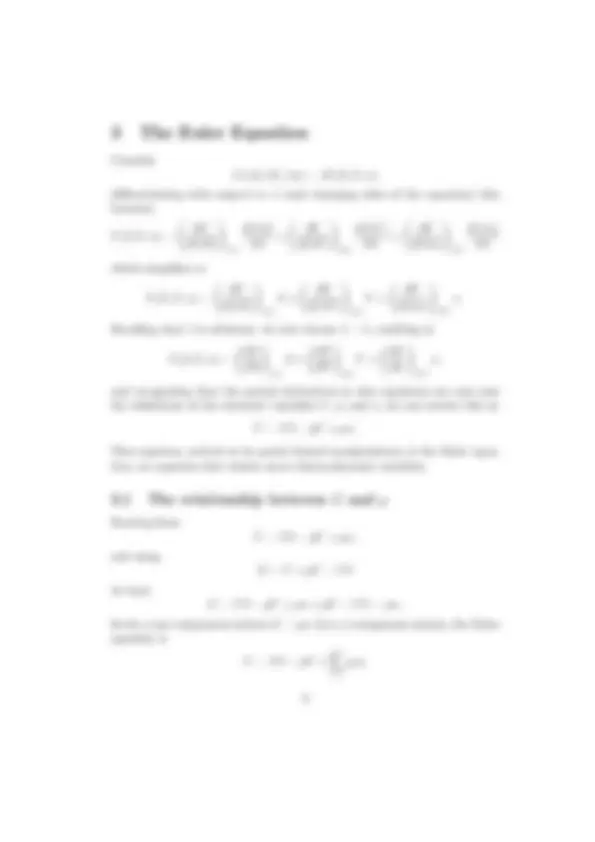




Study with the several resources on Docsity

Earn points by helping other students or get them with a premium plan


Prepare for your exams
Study with the several resources on Docsity

Earn points to download
Earn points by helping other students or get them with a premium plan
Community
Ask the community for help and clear up your study doubts
Discover the best universities in your country according to Docsity users
Free resources
Download our free guides on studying techniques, anxiety management strategies, and thesis advice from Docsity tutors
This equation, arrived at by purely formal manipulations, is the Euler equa- tion, an equation that relates seven thermodynamic variables. 3.1 ...
Typology: Lecture notes
1 / 4

This page cannot be seen from the preview
Don't miss anything!



This document was included in the TEX-showcase. This paragraph was added by Gerben Wierda to display how TEX4ht displays the formatting of terms like LATEX and TEX.
Thermodynamics Variables are either extensive or intensive. To illustrate the difference between these kings of variables, think of mass and density. The mass of an object depends on the amount of material in the object, the density does not. Mass is an extensive variable, density is an intensive variable. In thermodynamics, T , p, and μ are intensive, the other variables that we have met, U , S , V , N , H, F , and G are extensive. We can develop some useful formal relationships between thermodynamic variables by relat- ing these elementary properties of thermodynamic variables to the theory of homogeneous functions.
A polynomial a 0 + a 1 x + a 2 x^2 + · · · + anxn
is of degree n if an 6 = 0. A polynomial in more than one variable is said to be homogeneous if all its terms are of the same degree, thus, the polynomial in two variables x^2 + 5xy + 13y^2
is homogeneous of degree two. We can extend this idea to functions, if for arbitrary λ
f (λx) = g(λ)f (x)
it can be shown that f (λx) = λnf (x)
a function for which this holds is said to be homogeneous of degree n in the variable x. For reasons that will soon become obvious λ is called the scal- ing function. Intensive functions are homogeneous of degree zero, extensive functions are homogeneous of degree one.
Consider S = S(U, V, n),
this function is homogeneous of degree one in the variables U , V , and n, where n is the number of moles. Using the ideas developed above about homogeneous functions, it is obvious that we can write:
S(λU, λV, λn) = λ^1 S(U, V, n),
where λ is, as usual, arbitrary. We can gain some insight into the prop- erties of such functions by choosing a particular value for λ. In this case we will choose λ = (^1) n so that our equation becomes
n
n
n
S(U, V, n)
Now, we can define Un = u, Vn = v and S(u, v, 1) = s(u, v), the internal energy, volume and entropy per mole respectively. Thus the equation becomes
ns(u, v) = S(U, V, n),
and the reason for the term scaling function becomes obvious.
and so for a j-component system
∑^ j
i=
μini
4 The Gibbs-Duhem Equation
The energy form of the Euler equation
U = T S − pV + μn
expressed in differentials is
dU = d(T S) − d(pV ) + d(μn) = T dS + SdT − pdV − V dp + μdn + ndμ
but, we know that dU = T dS − pdV + μdn
and so we find 0 = SdT − V dp + ndμ.
This is the Gibbs-Duhem equation. It shows that three intensive variables are not independent – if we know two of them, the value of the third can be determined from the Gibbs-Duhem equation.